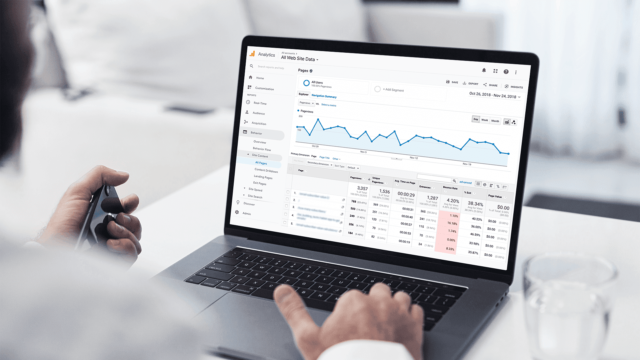A high bounce rate can be detrimental to your website’s performance, indicating that visitors are leaving without engaging with your content. Improving your website design is a critical factor in reducing bounce rates and enhancing user experience. This blog will explore actionable strategies to optimize your website design for lower bounce rates and increased user engagement.

Table of Contents
Toggle1. Optimize Page Load Speed
One of the primary reasons users bounce from a site is slow loading times. If a page takes too long to load, visitors are likely to leave before it even appears.
Tips for Improving Load Speed:
- Compress Images: Use image optimization tools to reduce file sizes without sacrificing quality.
- Minimize HTTP Requests: Limit the number of elements on a page to reduce loading times.
- Use a Content Delivery Network (CDN): A CDN can improve load times by serving your site’s content from locations closer to the user.
2. Create a Clean and Intuitive Layout
A cluttered or confusing layout can overwhelm visitors, causing them to leave quickly. A clean, intuitive design helps users navigate your site easily and encourages them to explore further.
Key Design Elements:
- Whitespace: Utilize whitespace effectively to create breathing room around text and images, making content easier to read.
- Logical Hierarchy: Organize content with clear headings, subheadings, and bullet points to guide users through your site.
- Consistent Navigation: Ensure your navigation menu is consistent across all pages, allowing users to find what they need without frustration.
3. Use Engaging Visuals
Visual elements play a crucial role in capturing visitors’ attention and keeping them engaged. High-quality images, videos, and graphics can enhance the user experience and reduce bounce rates.
Effective Visual Strategies:
- High-Quality Images: Use relevant, high-resolution images that align with your content and brand.
- Videos: Incorporate videos to convey information dynamically. Videos can engage users and encourage them to stay longer on the page.
- Infographics: Present complex information visually with infographics, making it easier for users to understand and retain.
4. Ensure Mobile Responsiveness
With a significant amount of web traffic coming from mobile devices, ensuring your website is mobile-friendly is essential for reducing bounce rates.
Mobile Optimization Tips:
- Responsive Design: Use a responsive design framework that adapts to different screen sizes and devices.
- Touch-Friendly Elements: Ensure buttons and links are easy to tap on mobile devices, preventing user frustration.
- Optimize Load Speed for Mobile: Use techniques like lazy loading for images to improve performance on mobile devices.
5. Enhance Readability
Users are less likely to engage with content that is difficult to read. Improving readability helps visitors absorb information quickly and encourages them to stay on your site.
Readability Improvement Strategies:
- Font Size and Style: Use clear, legible fonts with adequate sizing. Stick to a maximum of two or three font styles throughout your site.
- Contrast: Ensure sufficient contrast between text and background colors for better visibility.
- Short Paragraphs: Break up long blocks of text into shorter paragraphs to make content more digestible.
6. Create Compelling Call-to-Actions (CTAs)
Clear and compelling CTAs guide users toward the next steps you want them to take. If visitors don’t know what to do next, they’re more likely to bounce.
Effective CTA Tips:
- Use Action-Oriented Language: Use verbs that prompt action, such as “Sign Up,” “Download,” or “Learn More.”
- Strategic Placement: Position CTAs prominently within the content, ensuring they are easily accessible without excessive scrolling.
- Design for Visibility: Make CTAs visually distinct using contrasting colors and sizes to draw attention.
7. Reduce Pop-Ups and Interstitials
While pop-ups can be effective for capturing leads, excessive or poorly timed pop-ups can irritate visitors and increase bounce rates.
Pop-Up Best Practices:
- Limit Frequency: Avoid overwhelming users with multiple pop-ups. Limit them to one per visit.
- Timing: Use exit-intent pop-ups that appear when a user is about to leave the page, rather than interrupting their browsing experience.
- Provide Value: Ensure that pop-ups offer value, such as discounts or exclusive content, to encourage users to engage rather than leave.
8. Improve Internal Linking
Effective internal linking not only helps with SEO but also encourages users to explore more of your website, reducing bounce rates.
Internal Linking Strategies:
- Relevant Links: Include links to related articles or products within your content to guide users toward additional valuable resources.
- Contextual Links: Use contextual linking within your content to provide deeper insights and related topics, enhancing the user experience.
- Highlight Popular Content: Create sections on your homepage or blog that showcase popular or recommended articles, drawing visitors in.
9. Regularly Update Content
Fresh, relevant content keeps your website dynamic and encourages repeat visits. Outdated content can lead to higher bounce rates as users may find the information irrelevant or stale.
Content Update Tips:
- Regular Blog Posts: Maintain a blog that shares industry insights, tips, and updates to keep your audience engaged.
- Update Old Content: Refresh old articles with new information, ensuring they remain relevant and valuable.
- Engage with Current Events: Create content around trending topics in your industry to attract users searching for the latest information.
Conclusion
Improving bounce rates through effective website design is a crucial aspect of enhancing user experience and increasing engagement. By optimizing page load speed, creating a clean layout, using engaging visuals, ensuring mobile responsiveness, and implementing other strategies outlined in this blog, you can create a more inviting and user-friendly website. Take these steps to not only reduce bounce rates but also foster a loyal audience that keeps coming back for more!


No responses yet